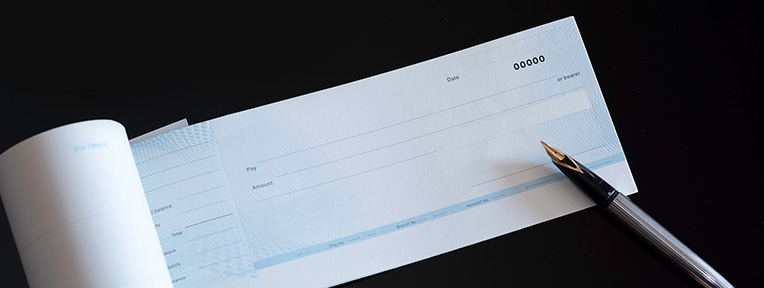
What Is a Cheque Deposit Slip?
Posted on Friday, March 28th, 2025 | By IndusInd Bank

When you deposit a cheque, it is important to enter accurate information. If you are unsure about the process and details required, you may end up filling out the cheque deposit slip incorrectly. This can lead to delays or rejections. An accurately filled cheque deposit slip ensures your deposit is processed in the right manner.
Let’s learn more about cheque deposit slips, how to fill a cheque deposit slip correctly, and some of the other aspects involved.
What is a Cheque Deposit Slip?
It is a form provided by banks for customers to deposit cheques into their accounts. It serves as a record of the transaction. This provides the bank with the necessary information to process the deposit. The slip includes blanks for the account holder’s details, the amount to be deposited, and the details of the cheques.
Key Components of a Cheque Deposit Slip
One must know the below components to know how to fill a cheque deposit slip correctly:
- Account Information: Your account number and name (if it is a savings account), or the organization/company’s name (in case of a business account).
- Cheque Details: Issuing bank, branch, amount, date on the cheque, and the payee’s name.
- Total Amount: The sum of the value of cheques being deposited.
- Acknowledgement Slip: Contains the same details for your records and a place for the bank’s seal.
Also Read: Decoding Bank Cheque Books
How to Fill a Cheque Deposit Slip?
Know how to fill a cheque deposit slip in the right manner to ensure your deposit is processed without any issues.
Here’s a step-by-step guide on how to fill a cheque deposit slip:
1. Request a Deposit Slip
Visit your nearest bank branch and get a deposit slip from the bank.
2. Fill in the Details
Enter the date, your account number, type of account, and account holder’s name. For cheques, include the cheque number, issuing bank, and amount. For cash, specify the denominations and total amount.
3. Sign and Submit the Slip
Sign the cheque deposit slip to authorise the transaction. Next, hand over the filled deposit slip and the cheque to the bank official.
4. Collect Acknowledgement
After processing, the bank will provide an acknowledgement slip with a seal. You can keep it with you for your record.
Steps Involved in Depositing a Cheque Slip
Follow the steps below to deposit the cheque in the bank after you have filled out the cheque deposit slip:
1. Double-check the details on each cheque to ensure accuracy.
2. Attach the cheques to the deposit slip. Use a paperclip to keep them together.
3. Hand over the filled deposit slip along with the cheques to the bank teller or place them in the deposit box.
4. Request a receipt from the teller as proof of your deposit.
Submission of a cheque deposit slip is a traditional method to deposit funds into an account. Nowadays, many banks have cheque deposit boxes. Customers can deposit the cheques into these boxes for a faster process.
If you prefer an even quicker way, opt for online banking services to transfer funds from one account to another. IndusInd Bank provides convenient digital banking services via its Net Banking portal and mobile app. You can also open a Bank Account online with IndusInd Bank to enjoy the various banking services.
Conclusion
A cheque deposit slip is an essential tool to deposit cheques into your bank account. Understanding what it is, how to fill it out, and the steps involved in depositing it, can simplify your banking experience.
IndusInd Bank offers various Savings Accounts with competitive interest rates, exclusive offers, and easy access to seamless banking! So, whether you want to deposit a cheque physically or transfer funds online, IndusInd Bank is the way to go.
Open an online Bank Account with IndusInd Bank now.
Disclaimer: The information provided in this article is generic and for informational purposes only. It is not a substitute for specific advice in your circumstances. Hence, you are advised to consult your financial advisor before making any financial decision. IndusInd Bank Limited (IBL) does not influence the views of the author in any way. IBL and the author shall not be responsible for any direct/indirect loss or liability incurred by the reader for making any financial decisions based on the contents and information.



 Offers
Offers Rates
Rates Debit Card Related
Debit Card Related Credit Card Related
Credit Card Related Manage Mandate(s)
Manage Mandate(s) Get Mini Statement
Get Mini Statement
 categories
categories Bloggers
Bloggers Blog collection
Blog collection Press Release
Press Release


